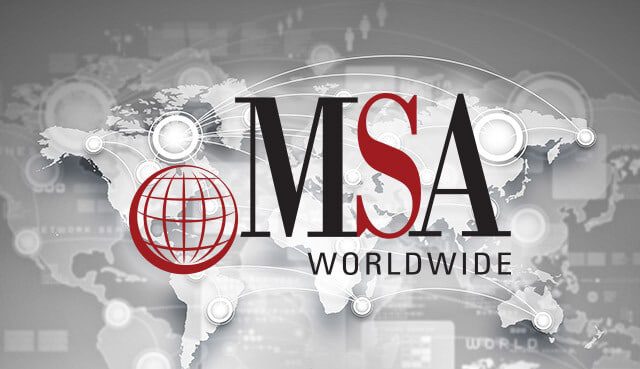Turning the Franchise Business Back On
As the post-pandemic economy continues to expand, now is the time to scale your franchise system back up.
By Michael Seid and Kay Ainsley, Managing Directors, MSA Worldwide
The COVID-19 pandemic took us all through unprecedented times. During the shutdown and through the slow re-opening of the economy, we stayed in close contact with our franchisor clients on how best to restart their franchise systems, and want to share some of that guidance with you.
During the pandemic our clients were, of course, in close contact with their franchisees, especially those where the franchisees remained open in some capacity during the shutdown and continued to stay in touch with their suppliers. While franchisee recruitment was somewhat impacted, franchisors were still working with franchisee candidates in their pipeline. Some were dealing with new franchisees that signed before the shutdown but subsequently considered changing their minds. Franchisors continued to actively work through the issues of determining the best approach to fully reopening their franchise systems.
Few of us had ever experienced turning an entire franchise system back on, and none of us had ever done it after a national business interruption. We identified a few critical learnings:
- There is no one-size-fits-all approach to re-opening franchise systems. Franchise systems differ in industry, size, resources, leadership, maturity, geography, culture, customer profiles, regulations, economics, and relationship between the franchisor and the franchisees. Fungible solutions and best practices adopted by others are not likely to work for everyone, even in the same industry subset. Solutions need to be contextual.
- Franchisors need to feel their way a bit, and be nimble in making decisions quickly as issues arise. It’s expected that decision making will need to be pushed down more than normal to the field level in many situations, as local solutions to products, supply chain, and staffing come up.
- Perhaps most important is that while franchise agreements were never designed as a management tool, they most certainly were not written to deal with system closure and restarting a franchise system. There will be some risk, and business judgement; moral suasion and communications are likely more important than the rights and obligations provided for in the agreements.
We have seen that the re-opening of business in the United States occurred on a market-by-market, region-by-region basis, depending upon the rates of infection and hospitalization in different markets. Further surges in case rates brought region-specific restrictions.
Covid-19 hurt all of us in franchising, including franchisors, franchisees, employees, and suppliers. For some individual franchisees and franchise systems, even with support available from the CARES Act, franchisors saw a shrinkage of locations as franchisees (and possibly a few franchise systems) were not able to survive – even in the short run. We also saw some industry segments grow during the pandemic, such as delivery-model quick service restaurants and home improvement franchises.
Projecting Recovery Demand
Recovery demand was not uniform. There was considerable pent-up demand, but varying by industry. And while the major period of COVID-19 disruption now seems long in the past, how people regard some products or services remains changed. For example, industries that rely on getting groups of people together in a confined space – such as boutique fitness studios, live event producers, and other indoor entertainment venues – are still taking longer for the public to re-engage with as we learn more about the lasting effects of the COVID-19 virus. It’s expected therefore that the speed, depth, and uniformity of recovery will continue to be challenging for some companies.
Companies in the stay-cation segments (i.e., haircare and other personal grooming) were largely able to open sooner and recover more quickly, as we also saw in pet grooming and residential and commercial cleaning systems. Other segments, including those targeted at business travel, took a bit longer to come back because people remained cautious about coming into close contact in tight quarters. Additionally, the period of mandated social distancing made video conferencing and other virtual interaction methods more common, and those methods continue to be popular.
There were concerns over whether there would be any lingering COVID-19 recommendations that would become regulations, since that might impact business sales and costs. Our clients were most concerned with potential regulations about customer separation that could impact sales at restaurants and other types of businesses where consumers are generally close together in a confined space. Each franchise system needed to determine where they fit into this changed demand paradigm as they did their planning. Most of our clients did not expect a fast return to business as usual, while others projected and experienced a surge.
Franchise System Assessment
All of our clients focused on the economic health of their franchise systems, and especially that of their franchisees. Each looked at the CARES Act and Payroll Protection Program, with some considering a requirement that franchisees take the loan packages available. We also had discussions on a variety of temporary solutions including short-term changes to fees, decreased or deferred payments on required inventory, and other methods to lower or postpone immediate expenses.
For many franchise systems of lesser size and financial capability, the impact of the closure caused them the same financial pain as it did to franchisees, and maybe more. Franchisors expected to incur costs that were never expected before the shutdown, and it was crucial for franchisors to come out of that period in decent financial health. Adjustments in franchisee support, franchise sales efforts, and corporate growth were largely needed, and a priority list had to be established for where those adjustments were be made.
In regard to the existing pipeline of franchise sales, some franchisors examined more closely their approach to how new franchisees finance their businesses, their system’s requirements for capitalization, and some of the riskier approaches franchisees may have taken in the past. The terms of the franchise agreement certainly shape many conversation with franchisees, with analyses of Force Majeure terms, potential refunds, and other items being discussed. As always, a business relationship is at its best when it can be governed by a strong shared culture and mutual understanding, but in times like the pandemic, the specific terms of the agreements had a major impact.
Looking at the sustainability issues facing individual franchisees and prioritizing an approach to their issues was the major part of our discussions. Where it was expected that viable locations might close, we had discussions on internal or external roll-up approaches to decrease the number of closures and mitigate the damage to the system as a whole.
Communications
Communications during the pandemic varied depending on leadership styles, and we saw wide variations. The use of Franchisee Advisory Councils and Franchisee Associations was a frequent discussion, and the reliance on those groups could be useful. Regardless of planning, franchisors understood that there would be challenges due to unanticipated situations. Trust in franchise system leadership, and the inclusion of franchisees in making some decisions, was essential. Franchisors agreed that messaging needed to remain positive, supportive, and both serious and lighthearted as appropriate. A continuous stream of “The Sky Is Falling” pronouncements eventually becomes ineffective, but it was important that franchisees, employees, and even suppliers saw that the franchisor’s leadership was taking things seriously and thinking critically.
Dissemination of accurate information to the franchise system was especially important. We had more than one client mention that the use of video conferencing and other communication tools that allowed for some open dialogue between all stakeholders was an effective way to keep everyone on the same page, and also to minimize the potential for misleading or dangerous rumors to be spread through the system.
In most cases it was recognized that the field staff played an important role, as most have a uniquely personal relationship with their franchisees. It is also recognized that field staff were in the best position to gather some local information important to planning and execution. In some cases, their role temporarily expanded to make localized decisions, including some related to brand standard flexibility.
One client examined executing their re-opening similar to how they would any other change strategy, therefore bringing some sense of comfort and experience to an uncomfortable and unprecedented situation. The difference here was that most change strategies have a testing component built in, so that results can be measured before system-wide execution. Gathering information quickly allows for necessary adjustments so long as the correct measurement matrix is in place.
There were also discussions on messaging and the best uses of the system’s brand fund on a more localized level versus a system-wide level. Because the system re-starts were not uniform or on a total system-wide basis, a strategy needed to be developed for which markets should be targeted, on what schedule, and what specific type of messaging might be appropriate for that time period, both seasonally and related to where in the “recovery period” we were.
Labor and Training
Labor was severely disrupted by the shutdown, and some workers did not return. That is an unfortunate truth. There is also still significant competition by every business seeking to fill their employee and management gaps, impacting labor rates.
Most franchisees seemed aware of the need to communicate with their laid-off staff and those whose hours and wages were cut. Franchisees keeping their employees aware of what was happening in the business, plans for re-opening, and gathering information on their plans to return, was necessary to determine recruitment needs.
Customers still expected the products and services they received before the closure to be delivered with the same efficiency, quality, and service levels they received before the shutdown. Franchise systems that typically trained staff locally during unit openings may not have had the infrastructure necessary to train the significant number of new workers that were needed.
We continue to work with our clients on variations for soft openings and train-the-trainer programs for franchisees. Where online approaches can be provided, we expect these will lessen. However, regardless of the approach, each system needs to examine both training and the impact openings may have on brand standard execution.
Supply Chain
Some supply chain flexibility is expected, as it was understood from our clients’ discussions with their suppliers that they also experienced disruption. Some items were not available during the re-opening, especially those with a shorter shelf life. Pricing from suppliers was also impacted by the effects of the pandemic on the global supply chain.
Franchisees were taking inventory and putting their opening orders together. This process gave franchisors the information necessary and allowed them to determine acceptable supplier and product alternatives when required. Also, local sourcing was used in some systems. Rolling out a limited menu of products or services was necessary for some, and the appropriate messaging for such an approach needed to be developed.
Brand Standards
The inability to re-open with a complete array of products or services required substitutions and sometimes LTOs (Limited Time Offers), or local substitutes. Variation from pre-COVID-19 offerings left some customers understandably disappointed. Flexibility for local product sourcing in the short term helped address that problem. Giving field staff flexibility to make some decisions locally was seen as a partial solution in some cases (a risk in others), and also reduced some franchisee stress. It’s important to identify that any changes to these processes were temporary, and that the franchisor continued to re-evaluate such changes as the business environment continued to adapt.
We expected franchising to emerge from this challenging time in good shape – and likely better than most – because of the strength of having locally-owned franchised businesses coupled with smart franchisor support. However, this requires creativity, planning, time, and patience.
We wish you the best of luck in reopening your franchise systems, and do let us know if we can provide you with any guidance and support.
MSA Worldwide provides strategic and tactical advisory services, primarily to franchisors, on a global basis. Call Michael Seid, Managing Director, at 860-523-4257 or email mseid@msaworldwide.com, or Kay Ainsley, Managing Director at (770) 794-0746 or kainsley@msaworldwide.com.
Do you have questions about franchising your business?
MSA Worldwide provides expert guidance on building a successful and sustainable franchise business. Contact us today for a complimentary consultation.







